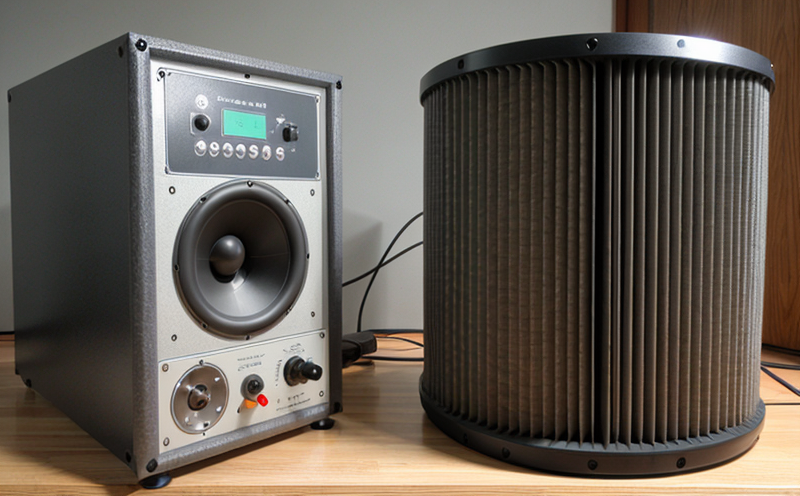ASTM E413 Classification of Sound Insulation Performance
The ASTM E413 classification is a critical standard used in the assessment and quantification of sound insulation performance. This method is particularly important for materials intended to reduce noise transmission across building partitions, floors, and other structures that separate spaces.
Sound insulation can be defined as the reduction in airborne sound levels achieved when separating two or more rooms within a building by means of a partition wall or floor-ceiling assembly. ASTM E413 provides a standardized approach for testing and classifying these insulating materials based on their performance under specific conditions. The standard focuses on the measurement of sound transmission loss, which is defined as the difference between the incident and transmitted sound levels.
The ASTM E413 classification system allows manufacturers to categorize their products into various classes according to their measured sound insulation performance. This helps in selecting the appropriate materials for specific applications, ensuring that buildings meet noise control requirements set forth by local regulations or design specifications.
To achieve accurate results using ASTM E413, it is essential to follow strict procedures outlined within the standard. These include detailed instructions on how to prepare test specimens, the type of equipment required, and the testing environment conditions necessary for reliable measurements.
One key aspect of this classification method involves placing a source speaker in one room while simultaneously measuring sound levels in both rooms using calibrated microphones. The difference between these measured values gives us the sound transmission loss (STL) value which is then compared against predetermined thresholds to determine compliance with specified classes.
The testing process typically requires specialized equipment such as ananechoic chambers or free-field booths, artificial sound sources like noise generators, and precision instruments capable of measuring very low decibel levels accurately. Proper calibration of all equipment involved in the test procedure ensures consistent results across multiple trials.
By adhering to ASTM E413 guidelines during testing, laboratories can ensure that they provide accurate classifications for potential customers or stakeholders who rely on this information when making purchasing decisions about sound-insulating materials.
In summary, understanding and implementing ASTM E413 is crucial for anyone involved in specifying, manufacturing, or evaluating building components designed to enhance noise control within structures. It offers a reliable framework for quantifying the effectiveness of various insulating materials against airborne sounds.
Frequently Asked Questions
Eurolab Advantages
At Eurolab, we pride ourselves on offering comprehensive testing solutions tailored specifically to your needs. Our experienced team specializes in delivering accurate results for ASTM E413 compliance with minimal turnaround times.
- We employ state-of-the-art equipment including anechoic chambers and precision sound level meters.
- Our facilities are equipped to handle a wide range of materials from various industries.
- A dedicated quality assurance team ensures every test follows strict protocols.
- We provide detailed reports that include recommendations for improvement where necessary.
In addition, our expertise extends beyond mere testing; we offer consultation services aimed at helping clients optimize their product designs to meet stringent noise control standards.
International Acceptance and Recognition
The ASTM E413 classification has gained widespread recognition internationally due to its rigorous methodology and reliability. Many countries around the world have adopted this standard as part of their national codes for sound insulation testing, ensuring consistency across borders.
| Country | Adoption Status |
|---|---|
| Australia | AS/NZS 1429.5:2016 |
| New Zealand | AS/NZS 1429.5:2016 |
| United Kingdom | BRE 3/11 |
| Germany | DIN EN ISO 717-1:2018 |
These national standards incorporate ASTM E413 as a basis for their own regulations, emphasizing the importance and utility of this classification system globally.
Use Cases and Application Examples
- Hospital environments where maintaining quiet conditions is paramount to patient care.
- Luxury apartment complexes aiming to create peaceful living spaces free from unwanted noise intrusion.
- Office buildings seeking to enhance worker productivity through reduced ambient sound levels.
| Use Case | Expected Outcomes |
|---|---|
| Hospital settings | Minimized disruptions due to lower noise transmission between wards and corridors. |
| Luxury apartments | Enhanced tenant satisfaction through superior acoustic comfort. |
| Office buildings | Better concentration levels among employees leading to increased efficiency. |
The ASTM E413 classification plays a vital role in these applications by providing objective data that supports informed decisions regarding material selection and design modifications.





